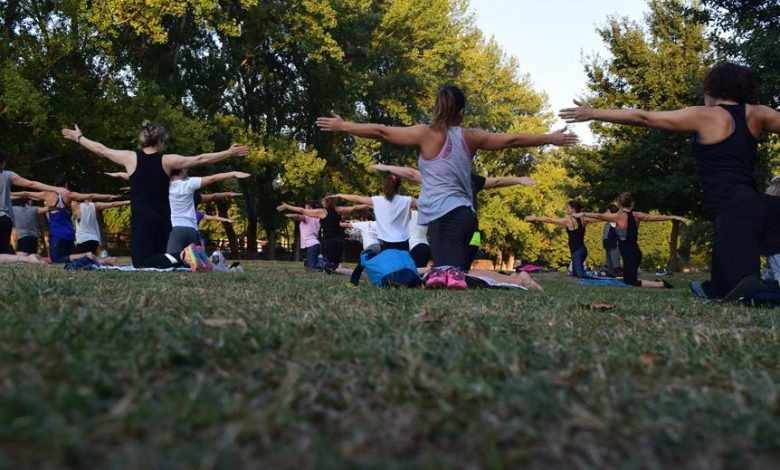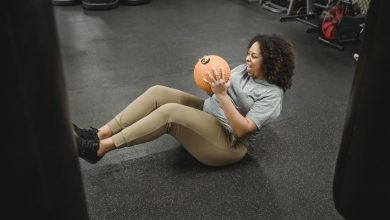Unleash Your Strength: The Key to Perfect Muscle Balance

Are you tired of feeling like your strength is being held back by muscle imbalances? Look no further than this article, where we will unravel the secrets to achieving perfect muscle balance. With an emphasis on reaching exercises, single-limb training, and mobility movements, you can unlock your true strength potential. By following a solid training plan and understanding the risks of imbalances, you can prevent injuries and maximize your performance. Get ready to unleash your strength like never before.
Key Takeaways
- Incorporate reaching exercises into your workout routine to balance upper body strength
- Include single-leg and single-arm training to address strength imbalances
- Prioritize mobility movements in your warm-up to improve range of motion and prevent imbalances
- Follow a solid training plan that includes corrective exercises to ensure overall muscle balance and stability
The Importance of Muscle Balance in Strength Training
To achieve optimal results in strength training, it is essential to understand the importance of muscle balance. Muscle balance refers to the equal development and strength of opposing muscle groups in the body. It plays a crucial role in maintaining stability and preventing injuries during workouts. Stability is the foundation of all movements, and without it, the risk of imbalances and compensations increases. Incorporating unilateral exercises, which focus on training one limb at a time, can help improve muscle symmetry and address any imbalances that may exist. By working each side independently, unilateral exercises ensure that both sides of the body are equally challenged, promoting overall balance and reducing the risk of muscular imbalances. So, incorporate unilateral exercises into your training routine and prioritize muscle balance for optimal strength gains and injury prevention.
Reaching Exercises for Upper Body Balance
Reaching exercises, such as lateral raises and overhead presses, are effective in promoting upper body balance and strengthening the muscles involved in pushing and pulling movements. These exercises target the muscles in the shoulders, chest, and upper back, helping to improve overall upper body strength balance. By incorporating reaching exercises into your workout routine, you can ensure that both the pushing and pulling muscles are equally developed, reducing the risk of muscle imbalances and potential injuries.
To give you a better understanding of the reaching exercises that can help achieve upper body balance, here is a table showcasing some examples:
| Reaching Exercises for Upper Body Balance | Muscles Targeted |
|---|---|
| Lateral Raises | Deltoids, Rotator Cuffs |
| Overhead Presses | Deltoids, Triceps |
| Pushups | Chest, Triceps |
| Landmine Presses | Shoulders, Upper Back |
Incorporating these exercises into your workout routine will not only improve your upper body strength balance but also enhance your overall performance in pushing and pulling movements. So, don't forget to include reaching exercises in your training program and unleash your full upper body potential.
Single-Limb Training for Balanced Strength
During single-limb training, athletes can focus on strengthening individual limbs and addressing potential imbalances through targeted exercises. This form of training allows for a more specific approach to developing strength and stability. Here are four key benefits of incorporating single-limb training into your workout routine:
- Improved weight distribution: By training each limb independently, you can ensure that both sides of your body are equally strong. This helps to distribute weight evenly during exercises, reducing the risk of overcompensation and potential injuries.
- Enhanced stability training: Single-limb exercises require greater balance and control, as you are relying on one leg or arm to support your body. This type of training can improve overall stability and proprioception, leading to better performance in sports and daily activities.
- Targeted muscle activation: Single-limb exercises allow you to isolate specific muscle groups, ensuring that each side of your body is equally engaged. This can help correct imbalances and prevent one side from becoming dominant.
- Functional carryover: Single-limb training mimics movements that we commonly perform in everyday life, such as walking, climbing stairs, or carrying objects. By training one limb at a time, you can improve the functional strength and coordination needed for these activities.
Incorporating single-limb training into your workout routine can help you achieve balanced strength, improve stability, and enhance overall performance.
Mobility Movements for Improved Range of Motion
Incorporating dynamic stretching exercises into your warm-up routine can significantly enhance your range of motion and improve overall mobility. By focusing on improving flexibility and enhancing joint mobility, you can prevent muscle imbalances and reduce the risk of injury during your workouts. One effective way to achieve this is by incorporating mobility movements into your warm-up routine. This helps to loosen up tight muscles and increase the mobility of your joints, allowing for a greater range of motion during your workout.
Here is a table outlining some key mobility movements for improved range of motion:
| Movement | Target Area | Benefits |
|---|---|---|
| Hip circles | Hips and lower back | Improves hip mobility and spinal flexibility |
| Shoulder dislocates | Shoulders and upper back | Increases shoulder mobility and helps correct posture |
| Ankle rotations | Ankles | Enhances ankle mobility and stability |
| Cat-Cow stretch | Spine | Promotes spinal mobility and flexibility |
Incorporating these mobility movements into your warm-up routine can have a significant impact on your overall performance. Not only will you experience improved flexibility and joint mobility, but you will also reduce the risk of muscle imbalances and injuries. So, don't neglect the importance of mobility exercises and make them a regular part of your workout routine.
Designing a Solid Training Plan for Muscle Balance
A well-structured training plan is essential for achieving optimal muscle balance and ensuring overall strength and stability. To design a solid training plan for muscle balance, consider the following:
- Importance of core stability: Core muscles play a crucial role in maintaining balance and stability. Incorporate exercises that target the core, such as planks, deadlifts, and Russian twists, to strengthen this area.
- Incorporating balance training: Balance exercises challenge the body's stability and help improve coordination. Include exercises like single-leg squats, stability ball exercises, and yoga poses to enhance balance and prevent muscle imbalances.
- Reaching exercises for balancing upper body strength: Perform reaching movements like pushups and landmine presses to open up the shoulder blades and balance both pushing and pulling movements. Aim for a 2:1 pull-to-push ratio to avoid imbalances.
- Single-leg and single-arm training for balanced strength: Include single-limb movements in your workouts to address strength imbalances. Choose weights based on your weaker side to even out strength, and incorporate single-leg and single-arm exercises to improve stability.
Understanding the Risks of Muscle Imbalances
Muscle imbalances pose several risks to athletes and individuals alike, including increased vulnerability to injuries and reduced overall functional performance. Assessing imbalances and addressing deficiencies is crucial in order to mitigate these risks and maintain optimal muscle balance. Imbalances can lead to overcompensation by certain muscles, putting excessive strain on them and increasing the likelihood of injury. Additionally, muscle imbalances can negatively impact overall functional performance, making it more difficult to perform everyday activities or excel in sports and fitness pursuits. By identifying and addressing imbalances through targeted exercises and corrective movements, individuals can improve their muscle balance and reduce the risk of injury. It is important to prioritize regular assessments of muscle imbalances and incorporate appropriate exercises into training programs in order to maintain a balanced and functional physique.
Correcting Imbalances: Cautions and Considerations
When addressing and correcting muscle imbalances, it is important to consistently and carefully consider the potential risks and limitations of various corrective methods. Here are some cautions and precautions to keep in mind to ensure that you are addressing imbalances safely:
- Gradual Progression: It is crucial to progress gradually when correcting imbalances. Rapid changes in training volume or intensity can increase the risk of injury.
- Proper Form: Focus on maintaining proper form during exercises. Poor form can exacerbate imbalances and lead to further issues.
- Individualized Approach: Each person's imbalances are unique, so it is important to tailor corrective exercises to address specific weaknesses and imbalances.
- Professional Guidance: Seek guidance from a qualified fitness professional or physical therapist who can assess your imbalances and provide appropriate guidance and modifications.
Assessing and Monitoring Muscle Balance in Your Workouts
Assessing and monitoring muscle balance is crucial for optimizing the effectiveness and safety of your workouts. By regularly assessing imbalances and monitoring progress, you can ensure that you are targeting all muscle groups equally and avoiding the risk of overuse injuries. One way to assess imbalances is by comparing the strength and range of motion on both sides of your body. If you notice significant differences, it may be necessary to incorporate specific exercises or modifications to address these imbalances. Additionally, monitoring progress is essential to track improvements and identify any areas that may require additional attention. Regularly measuring your strength, flexibility, and stability can help you gauge the effectiveness of your workouts and make necessary adjustments to achieve optimal muscle balance. Remember, the key to unlocking your full potential lies in maintaining balance throughout your entire body.
Frequently Asked Questions
How Do Reaching Exercises Benefit Upper Body Strength and Balance?
Reaching exercises play a crucial role in enhancing upper body strength and balance. By incorporating these exercises into your workout routine, you can achieve a more even distribution of strength between your pushing and pulling movements. Imbalances in muscle strength can have a negative impact on overall muscle health and increase the risk of injury. Reaching movements, such as pushups and landmine presses, help to open up the shoulder blades and improve range of motion. By addressing these imbalances, you can unleash your full strength potential and improve your overall muscle balance.
Can Compound Exercises Alone Lead to Imbalances in the Body?
Compound exercises, while effective for overall strength and muscle development, can indeed lead to imbalances in the body if not supplemented with targeted corrective exercises. These exercises primarily focus on multiple muscle groups and may neglect specific areas, resulting in strength disparities. To prevent such imbalances, it is important to incorporate exercises that address individual muscle groups and promote symmetry. By doing so, we can ensure a balanced and stable physique, reducing the risk of injury and optimizing overall performance.
Why Is It Important to Include Single-Leg and Single-Arm Training in a Workout Routine?
Including single-leg and single-arm training in a workout routine is important for achieving balanced strength and stability. These exercises help address any imbalances in strength between the limbs, as well as improve stability and proprioception. Single-leg exercises, such as lunges and single-leg squats, can help improve balance and core strength. Similarly, single-arm exercises, like single-arm rows and presses, can help correct any strength imbalances and enhance overall muscle balance. Incorporating these exercises into your routine contributes to a well-rounded and functional physique.
Which Specific Areas of the Body Should Be Focused on for Improved Mobility in Warm-Up Exercises?
Improved flexibility and core stability are crucial for overall fitness and injury prevention. When focusing on warm-up exercises, specific areas of the body that should be targeted for improved mobility include the ankles, hips, and thoracic spine. Incorporating mobility exercises that open up these areas can help increase range of motion and reduce the risk of imbalances. By addressing these key areas in the warm-up routine, individuals can enhance their flexibility and stability, leading to better overall performance and reduced risk of injury.
What Are the Potential Risks of Muscle Imbalances and How Can They Lead to Injury?
Muscle imbalances can pose potential risks and lead to injury. Significant strength deficits on one side can indicate instability, while chronic pain and pre-existing conditions may require addressing imbalances. Athletes should be cautious when attempting to correct imbalances, as improper techniques or overcompensation can increase the risk of injury. It is important to assess workouts based on specific variables to determine the need for correction. Maintaining overall muscle balance and stability through a solid training plan can help prevent imbalances and reduce the likelihood of injury.



